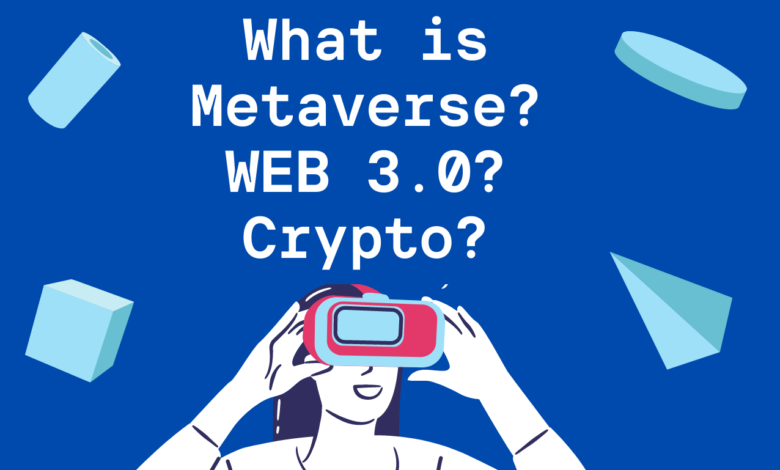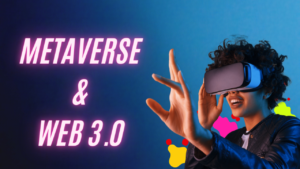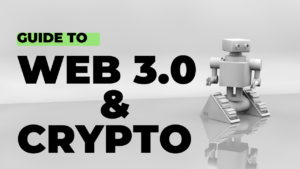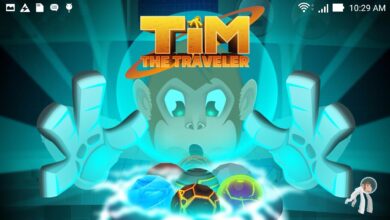
Facebook has updated its name to Meta, Spotify is looking for Web3 experts, Twitter is adopting NFT technology, Sony has filed patents to accept cryptocurrencies for its e-sports betting, and Microsoft is backing Web 3.0 -based startups.
But first, what exactly are Web3, Metaverse, non-fungible tokens (NFTs), and cryptocurrencies?
To begin with, all of them are part of the new internet revolution and yet are different in many ways.
What is Web 3.0?
Web 3.0 is the next generation of the internet, where users own and control their creations, digital assets, and online identities. It is a decentralized ecosystem that works on the latest technologies, such as AI, machine learning, and blockchain.
It is not similar to web 2.0 (the present internet), where big tech organizations like Google, Youtube, and Facebook have too much power and influence over data and content.
With the power of AI, Web 3.0 would make the internet more intelligent or process information with near-human-like intelligence.
The main key features of Web 3.0 are:
- Ubiquity: Internet services are omnipresent, which means the internet is accessible anytime from any device. All devices are connected to the web, and the growth of the Internet of Things will take it to new heights.
- Semantic Web: Semantic web technology allows users to produce, share, and link material via search and analysis based on their understanding capacity. The semantic web aims to store and organize the data in a way, that can help a system understand what a given piece of information means. To create and distribute better content, a website should be able to comprehend the language similar to humans.
- Artificial Intelligence: With artificial intelligence and Natural Language Processing, computers can comprehend information like humans, resulting in faster and more relevant results.
- 3D Graphics Web 3.0 is known as a spatial web because of the extensive use of graphics technology. Web 3.0 aims to blur the line between real and virtual worlds by redefining graphics technology and turning (3D) virtual worlds into reality.
Web 3.0 and Metaverse

The Metaverse is a network of 3D virtual worlds where users can interact with each other and form social connections. It integrates VR, AR, gaming, cryptocurrency, blockchain, and many other technologies.
In simple words, Metaverse is a new way for people to engage on the internet. Instead of 2D screens on computers or mobile phones, the web content is transformed into three-dimensional objects in the Metaverse.
In the Metaverse, the website exists in a 3D space, where users can move around, communicate with other users and create their avatars. It offers a visually and physically realistic experience by integrating virtual reality goggles.
Is Web 3 and Metaverse the same thing?
Web 3.0 offers many features for the Metaverse!
Web 3.0 is all about the decentralized internet, about who will own and control the internet, while the focus of the Metaverse is how users will experience this future internet.
Both the Metaverse and Web 3.0 are complementary visions of the future internet. They aren’t the same thing, but both overlap each other using shared technology like tokenization. One of them could not come to fruition without the other.
Web 3 and Metaverse are bound to complement each other as they both are formed on the foundations of decentralization.
There are various applications of Web 3.0 on Metaverse, such as digital assets using NFTs, utility tokens, gaming applications, and more.
These use cases together make Metaverse and Web 3.0 overlap each other.
Web 3.0 and Crypto

Web 3.0 and crypto are correlated. The crypto-technologies such as decentralization, token-based economies, and blockchain forms the base of Web 3.0.
Web 3 and cryptocurrencies share the core principles of decentralization and equal access. Also, most of the Web 3.0 protocols rely heavily on cryptocurrencies.
Cryptocurrencies such as Bitcoin, Ethereum, and other coins work on the blockchain, which records all the transactions. It is a fully decentralized system as all the devices connect to the internet.
Web 3.0 offers monetary incentives (crypto tokens) to the users who contribute to the growth of its projects. These tokens are digital assets that aim to create a decentralized Internet.
Not only usernames and wallet addresses, but Web 3.o also relies heavily on non-fungible tokens (NFTs), digital currencies, and other blockchain entities.
NFTs form the foundation of assets in the metaverse world.
One example is the Metaverse project – The Sandbox. It uses NFTs to represent items in the virtual world, such as land, furniture, decor, etc.
Conclusion
The next generation of the internet is here: Web 3.o It is where people will be connected to a decentralized network and will have control of their data.
With Web 3 emerges several new technologies, such as blockchain, decentralization, Metaverse, NFTs, and more.
It is a very early stage of decentralized networks, and time will tell which of these technologies will rule the web. But, web 3.o is coming and is going in a big way.




